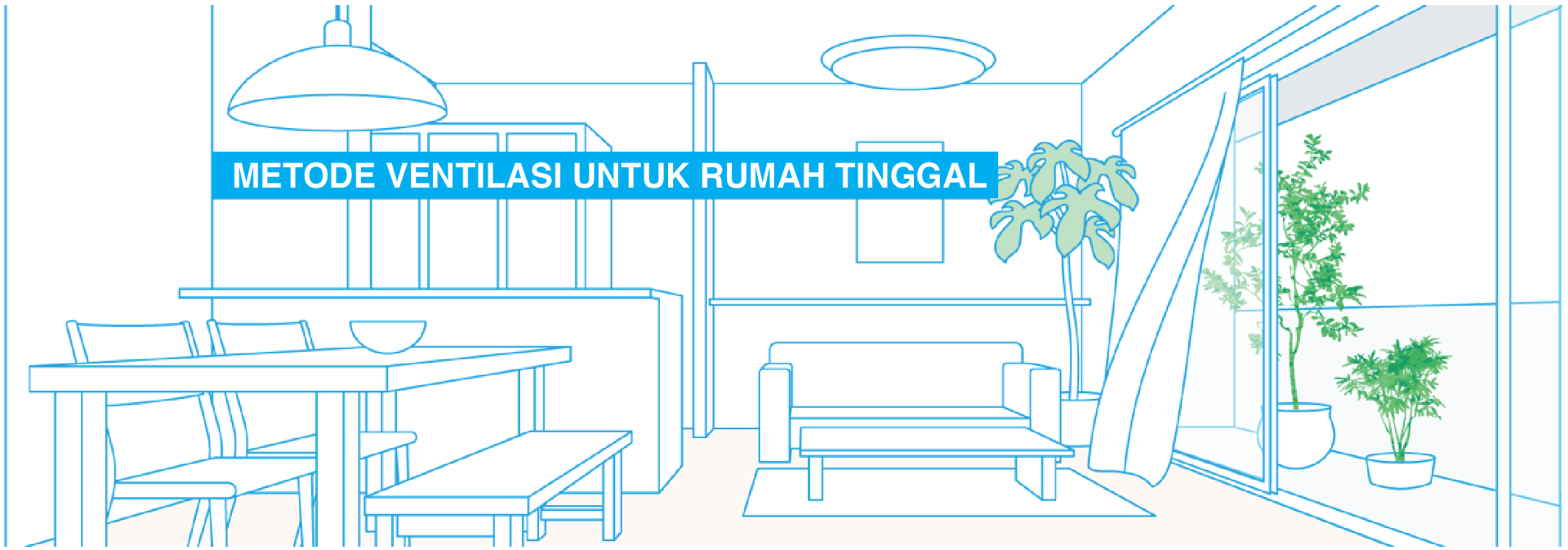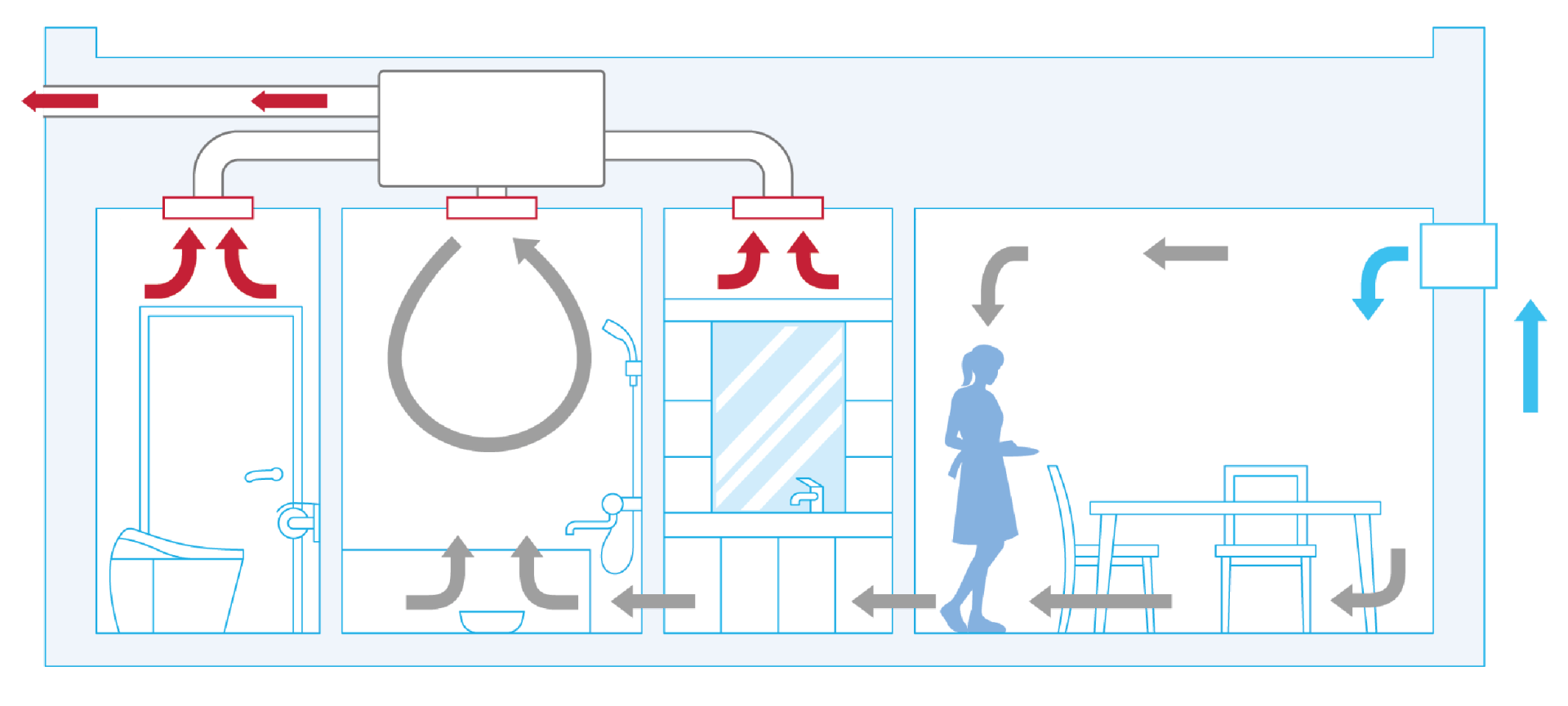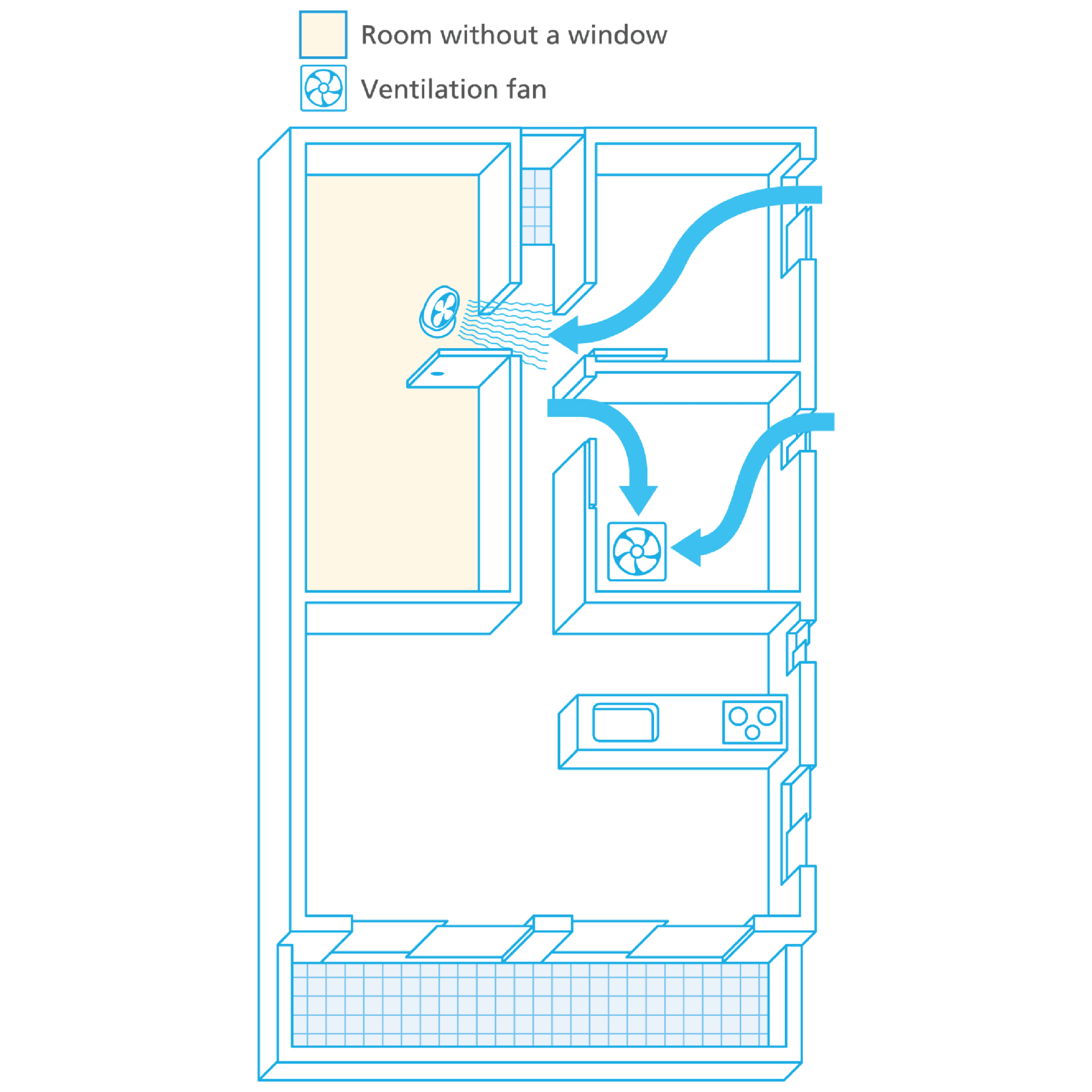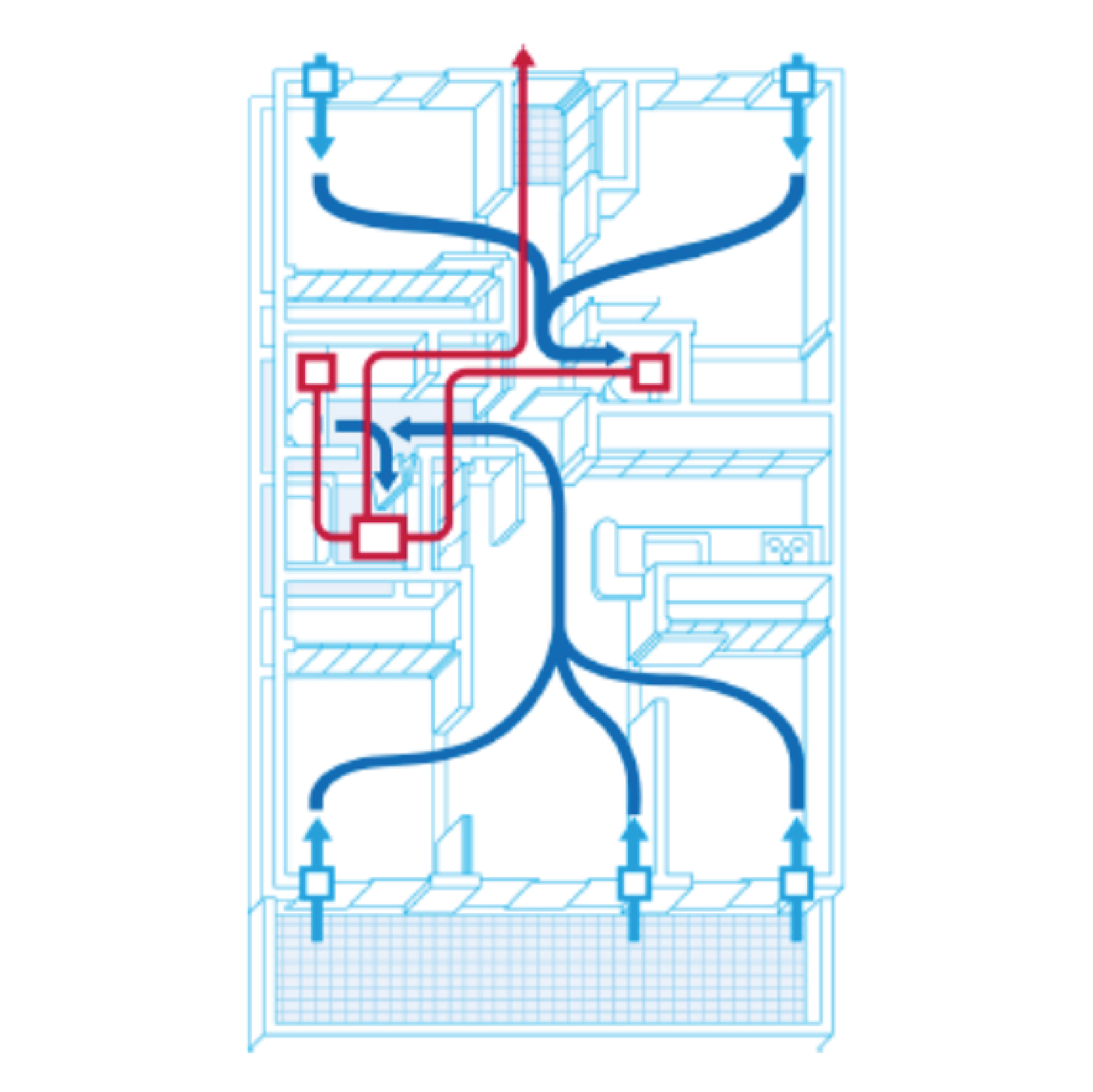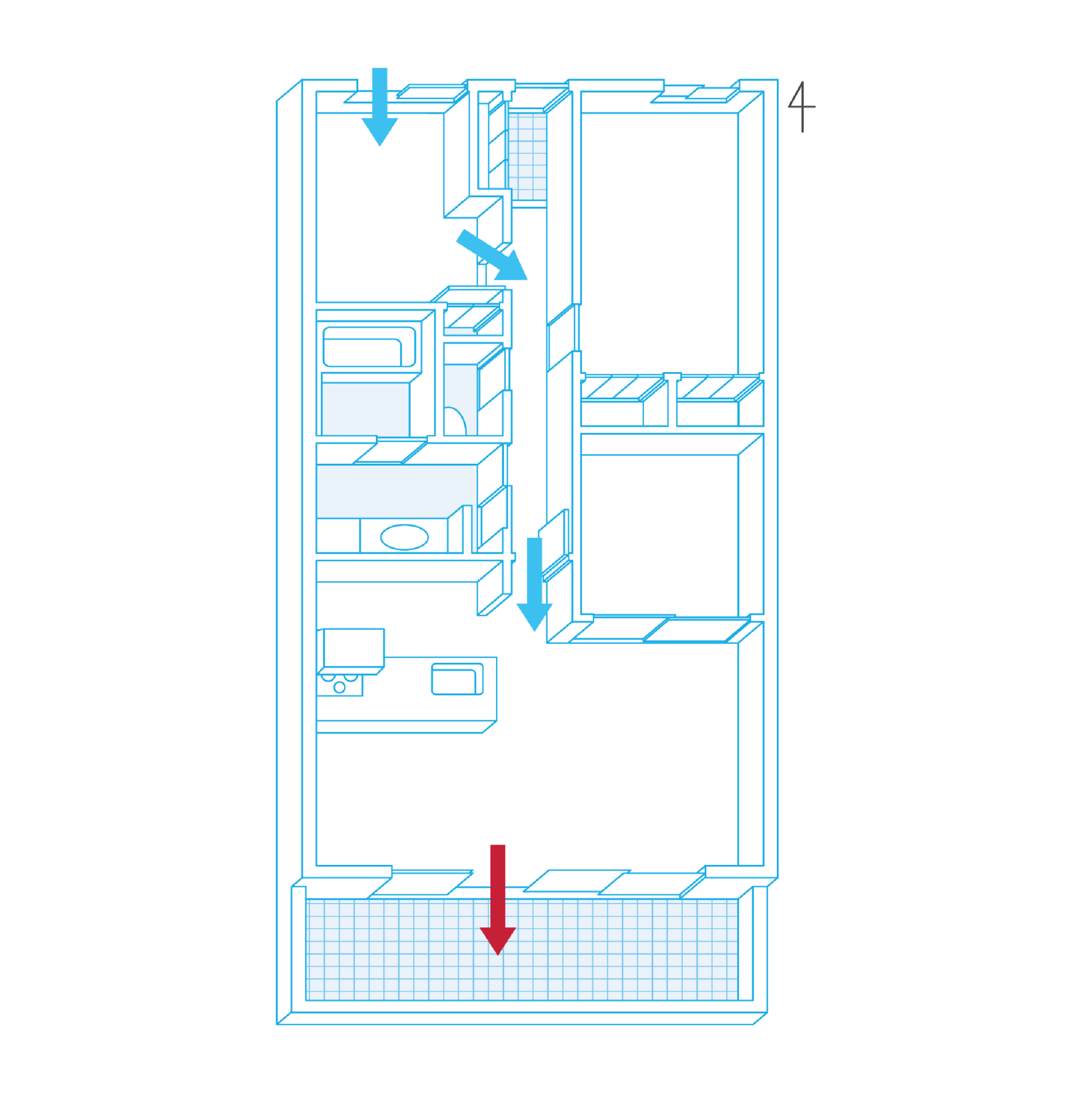VENTILATION METHOD FOR HOUSEHOLDS (FOR HEALTH AND COMFORT)
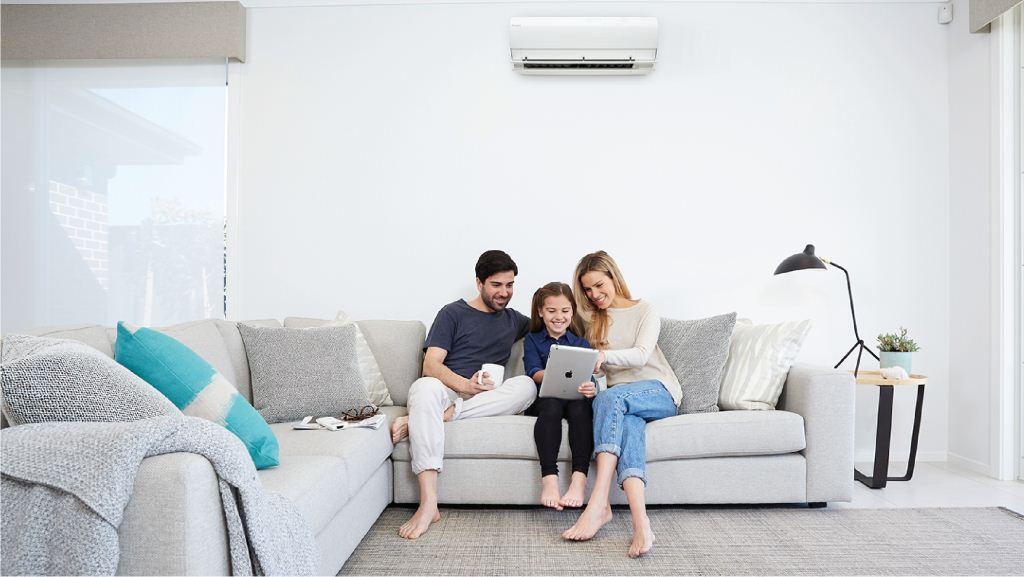
Daikin provides tips on proper ventilation for the health and comfort of your home.
1. Basic Knowledge of Ventilation
1.1 What is ventilation?
1.2 What are pollutants?
1.3 Why do we need ventilation?
1.4 Can you use the air conditioner for ventilation?
2. Tips Regarding Ventilation
2.1 What should be done to ventilate the house?
2.1.1 Open windows and create an air passage
2.1.2 Using ventilation fans properly
2.1.3 Using a ventilation fan in the kitchen
2.2 Other methods of ventilation
1. Basic Knowledge of Ventilation
1.1 What is ventilation?
Ventilation is the exchange of indoor air with fresh air outside the room, which aims to reduce and replace polluted air (substances that are harmful to humans) in the building.
1.2 What are pollutants?
Pollutants are substances that are harmful to humans, including carbon dioxide (CO2), carbon monoxide (CO), formaldehyde (HCHO), house dust, pollen, bacteria and viruses found in the room. This ventilation is expected to reduce and eliminate pollutants in the room.
Why Do We Need Ventilation?
• Because ventilation can reduce and remove pollutants in the air in the room. In a closed room, air cannot escape easily. This keeps the polluted air indoors and will continue to grow. This situation can affect human health in the room. Ventilation is very important to remove the polluted air.
• Because dirty air will accumulate in rooms without a ventilation system. Many housing such as houses or apartments have a high level of air tightness, so that dirty air does not easily escape. When changes are not made to these conditions, poor ventilation will occur and dirty air will increasingly accumulate in the room.1.4 Dapatkah Kita Menggunakan AC sebagai Ventilasi?
Many people think that air conditioners bring in air from outside and that air is used to ventilate the room. In fact, air conditioners, which are commonly used in residential areas, provide comfort by simply passing air from inside the room. After cooling, the air conditioner then returns the air to the room. The air in the room is not exchanged for fresh air from outside. Generally, air conditioners do not allow ventilation. But ventilation must be done in another way.
2.1.1 Method of Opening a Window to Create an Air Line
When ventilation is done by opening a window, it is better to open two windows at once rather than just one window. This is useful for creating airways for more effective ventilation. It is even more effective if the two windows face each other diagonally.
Good example: It's very effective for opening windows that face diagonally from one another
Opening two windows close to each other will prevent fresh air from entering the room.
Bad example: Inefficient results are obtained from opening two windows close together due to the narrow air circulation area.
2.1.1 For Rooms With Difficulty Getting
Air Blowing Even When The Window Is Open Air blowing tends to enter the room smoothly through narrow gaps, while easily exiting through wide gaps (with less force).
When it is difficult to get the wind to enter the room, adjust the width of the window opening.
If you find it difficult to get air flowing into the room, try opening an air intake window with a narrow opening. Meanwhile, open the window for air out with a wider gap. This can increase the efficiency of ventilation.
2.1.2 For Rooms With Only One Window
When there is only one window, it is very effective to open the bedroom door and place a fan or similar device near the window.
The most effective method is to direct the fan at the window and leave the air outdoors. If the fan is directed to the room, even though fresh air from outside enters the room through the window, the dirty air in the room will remain inside.
For a room with only one window, place the fan against the window to create a breeze.
Good example: It is recommended that a fan towards the window creates a breeze and good air circulation.
2.1.3 For Rooms That Do Not Have A Window
When the room has no windows, you can open the door and turn on the ventilation fan in the bathroom.
Air from other rooms is also effective in expelling air outside the house by turning on the ventilation fan or fan in the bathroom or kitchen.
Ventilation method for a room without windows.
2.1. 2 Using the Ventilation Fan Correctly
By installing a ventilation fan or fan, you can produce sustainable and reliable ventilation. Ventilation holes are made in the walls and roof. When you use the ventilation fan every day to shower, go to the bathroom and so on. Dirty air in the room will be discharged out of the house (exhaust air) through the ventilation holes. Meanwhile, fresh air from outside the room simultaneously enters the room (air supply). A proper design is needed to support the system.
3. Using a ventilation fan in the kitchen
Turning on the kitchen ventilation fan can be very effective, because it can release the largest volume of air compared to all ventilation fans installed in the house. Try to open a window that is located away from the kitchen to effectively ventilate the entire room. Even if two windows are open, a kitchen ventilation fan can effectively assist with ventilation.
Therefore, we recommend using a kitchen ventilation fan in addition to the window opening.
Examples of Ventilation for Apartments If you want to ventilate the entire room, open the entrances and windows on the side of the balcony, and make sure to open the airflow paths.
When you can't open the entrance, open a window facing the balcony.
There is no airflow in or out if only one window is open, so be sure to open both ends of the window to allow the airflow to work.
Whole House Ventilation System (VAM Series)
Daikin has a total ventilation system for housing. The system provides continuous and reliable ventilation and creates a comfortable space. The unit system recovers lost heat energy and resists changes in room temperature caused by ventilation. Thus, saving energy and lowering the load on your air conditioner.
4 Advantages of the VAM Series
• Continuous and reliable ventilation
• Creating a comfortable room
• Energy saving
• Reducing heat loads (can reduce AC capacity)
You might also like





